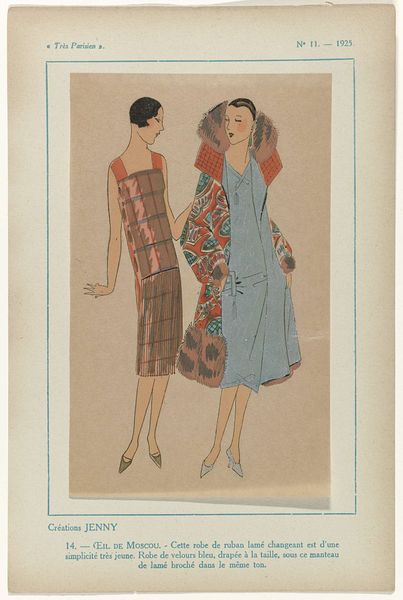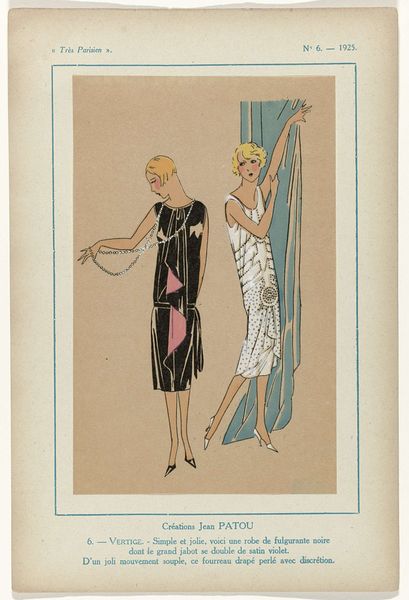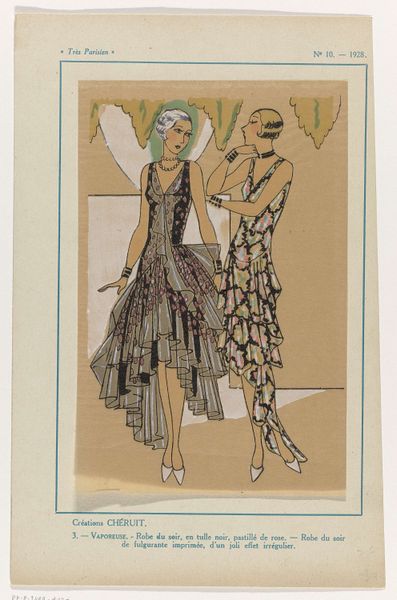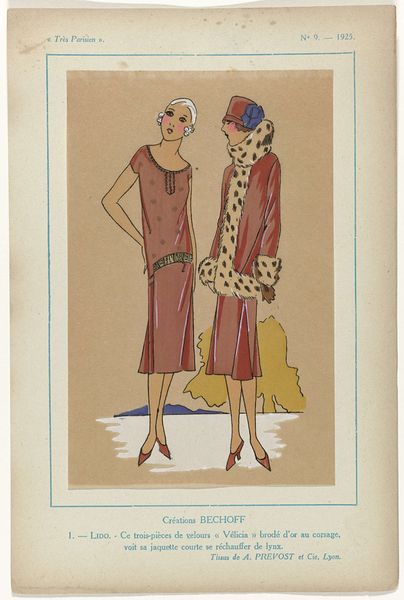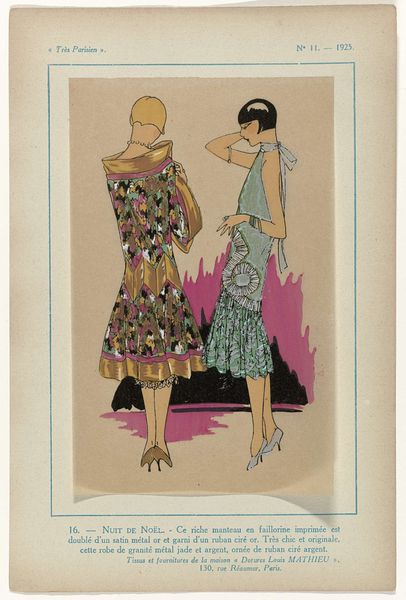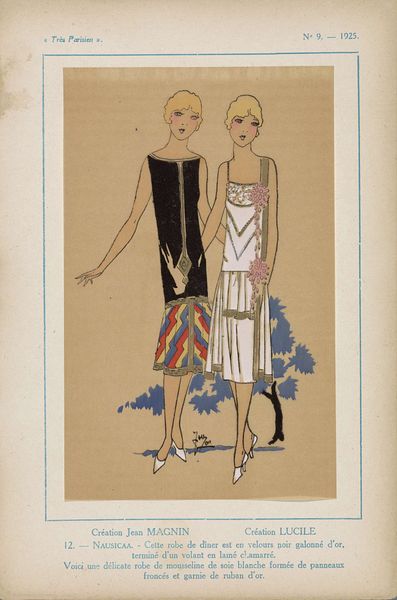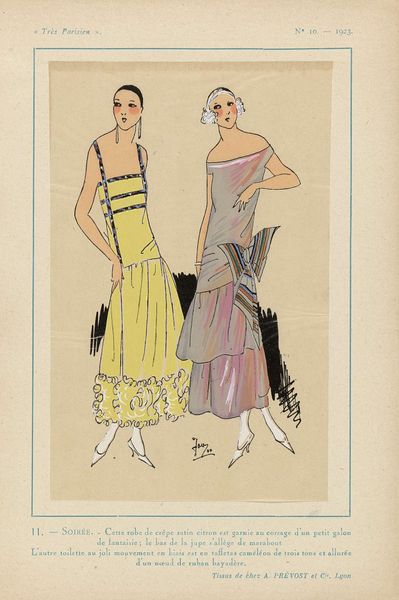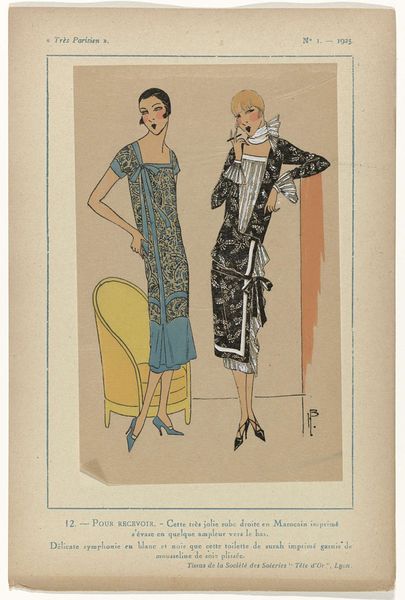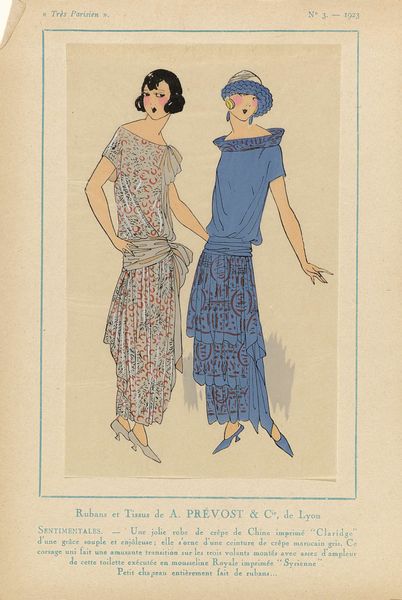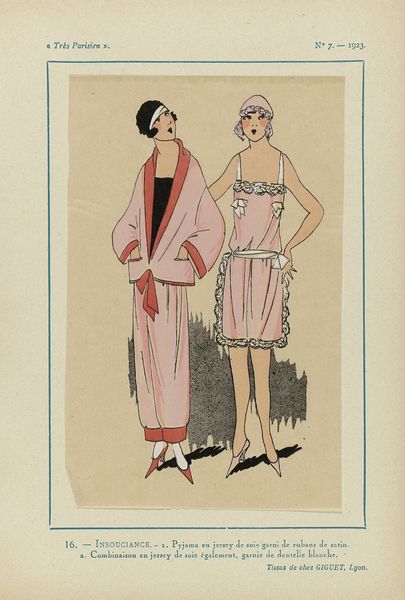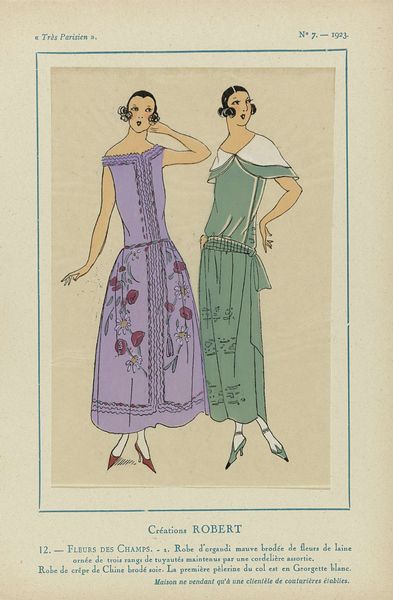
drawing, paper, watercolor, ink
#
portrait
#
art-deco
#
drawing
#
figuration
#
paper
#
watercolor
#
historical fashion
#
ink
#
genre-painting
Dimensions: height 271 mm, width 182 mm
Copyright: Rijks Museum: Open Domain
Curator: Here we have “Très Parisien, 1924, No. 7: Créations Jean Patou…” a drawing using ink and watercolor on paper, currently residing here at the Rijksmuseum. Editor: It feels airy, almost ephemeral. The light watercolor washes and delicate ink lines capture a very specific mood of 1920s fashion illustration, but in terms of materials it would not last long. Curator: Absolutely. This piece, like others from “Très Parisien,” was less about lasting artistic statement and more about the here and now—disseminating the latest styles of Jean Patou through a periodical format. Editor: The dress on the left looks mass-produced yet unique, while the dress to the right seems almost architectural in its structure. There's this tension between handcrafting and industrial output reflected in its composition. Curator: Fashion magazines like “Très Parisien” played a vital role in democratizing haute couture. Suddenly, these Parisian designs, previously only available to a wealthy elite, were accessible—in image form, at least—to a much wider audience, impacting garment construction globally. Editor: I am struck by the pleating on the lilac dress, so precise. Imagine the labor involved, even reproduced industrially, in replicating that level of detail at scale. Curator: The seemingly casual pose of the models actually reflects a very deliberate social performance of modernity. They embody the new ideal of the 'garçonne'—the modern, independent woman embracing simpler silhouettes and shorter hairstyles, and smoking was also fashionable at that time. Editor: It is quite a departure from previous artistic periods isn't it? So it seems to embrace modernity head-on, turning material choices into an active rejection of more traditional symbols and societal values. Curator: Precisely, its influence echoes across time. Editor: This gives me much food for thought on how printed works shift perspectives.
Comments
No comments
Be the first to comment and join the conversation on the ultimate creative platform.

